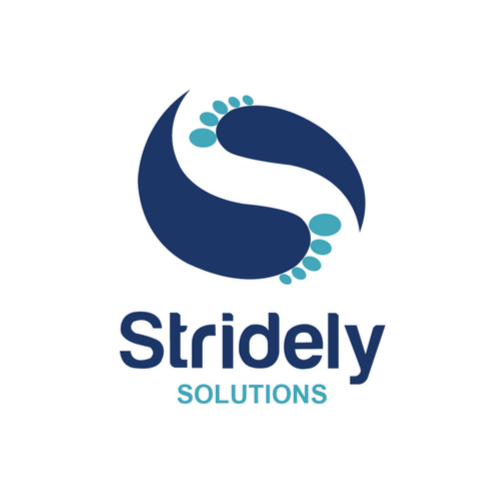

Brand Identity Guide for CIOs – 3 Aspects that you never miss out
As enterprises expand beyond boundaries, the perimeter of scalability disappears enlisting various opportunities for the CIO to rethink their strategies and embed modern ones to facilitate the growth of the business.
Time has changed and so has the business norms. Today, every business operation is carried out digitally, opening doors for newer avenues. As enterprises expand beyond boundaries, the perimeter of scalability disappears enlisting various opportunities for the CIO to rethink their strategies and embed modern ones to facilitate the growth of the business.
Earlier, we saw the incorporation of the firewall to protect data and keep the system safe. However, as data goes beyond the traditional boundaries and migrates to the cloud, there is an urgent need to shift to additional methods of data security.
Gone are the days when organizations believed that storing applications in their on-premise software and then guiding them through firewall would help them shield their organizational data from cyber threats and thefts. Today, the proliferation of cloud technology has altered the way organizations store and access data. There is no more internal or external data.
As a matter of fact, all the data and applications are stored in the cloud and hence, accessed from outside sources. And it is not the customers or the employers but all within the organization that own access to that data. Given the above, it is important that all of the data is kept secure. Meaning that irrespective of who is accessing the data and from where it would be safe and free from threats.
Now, that there is an amalgamation of mobile, cloud and social interface, there exists a disparity in user identities, even though it benefits the enterprise. The security systems that prevail across the industry can sustain the devices and the pool of systems that tries to access them.
From where the industry thrives, we see that identity is the all-new concept that guides all of the business processes today. It would help organizations to keep their data safe, render agility to their business and further, enhance the end-user experience.
With this being said, there are three things that every CIO needs to get right.
- Choosing The Right Platform
IAM or identity and access management are believed to have three different layers. The first one is the platform where the IAM thrives. Apparently, this is the one that is easily understood and widely adopted. As the system to store records or keep track of the identity, the platform is like the rule book. Imagine that there are thousands of users accessing your organizational data in a 24-hour span.
So what this platform does is record all of the information, about the people who have accessed the same and when. If any of the data has been shared, that too will be recorded in the platform.
An excellent example of the platform would be the Azure Active Directory. It is the mix and match of technologies that are put right and can be used as the identity-as-a-Service to facilitate different functionalities such as the MDM, multiplicity of cloud applications, multi-factor authentication, and single-sign-on authentication.
If everything is done right, the identity platform would render a toolset that can revolutionize that IT industry and make it easy for all to gain unified access to organizational data.
- The Right Governance
Now platform was where the IAM stood and governance is how you make identity work. What we mean to say here is that having the right governance is what makes the entire flow across the organization seamless and error-free. For ages, the standard procedure of accessing data was to fill out a form and send the same to the IT department. After scrutinizing the request, access would be granted or denied.
Now, considering that there are thousands of applications in a single infrastructure and several users expecting permission to access them. The manual process would be both obsolete and impossible to implement. This is where the idea of automating the governance pops in. The right governance is the fusion of technologies such as artificial intelligence, machine learning, and advanced tools. This turns the entire process faster and more efficient.
For instance, one-click access or integration with tools embeds the much-needed agility and flexibility within the organization. This not only fosters better functioning of business processes but at the same time, ensures faster delivery to the user, enhancing the overall experience.
- The Right Guidance
After the right platform and the right governance, the next thing to lay the focus on is the right guidance. What would the technology do if it isn't applied in the right manner? In fact, no matter how efficient your processes and technologies are, if you fail to implement them in the right way, your enterprise would dramatically fall.
It might so happen that you have invested in the right set of emerging technology and also adopted the right processes to put the same to use, the question remains how right?
Today, enterprises largely depend on third-party partners that help them employ solutions in a way that can accelerate the time to market. Further, it is seen that organizations tend to rely on external partners for assistance and support.
These partners have the knack to empower organizational success by guiding them right. Starting with the configuration of the identity platform to the incorporation of being infrastructure that can keep the platform secure, allowing organizations to undertake significant life cycle processes to manage the capabilities of the entitlement, the third-party partners would excel in all. In fact, it might also happen that they help organizations leverage from their expertise and the experience to effectively craft, organize and deploy identity solutions, in a way that is both fast and effective.
It is the combination of all three of them that fosters the growth of the organization and at the same time, adhering to the security norms.
The Final Word
The bottom line being the fact that enterprises today look for ways to expand. While doing so maintaining the integrity of data seems crucial and identity is the only thing that an organization can put to use.




